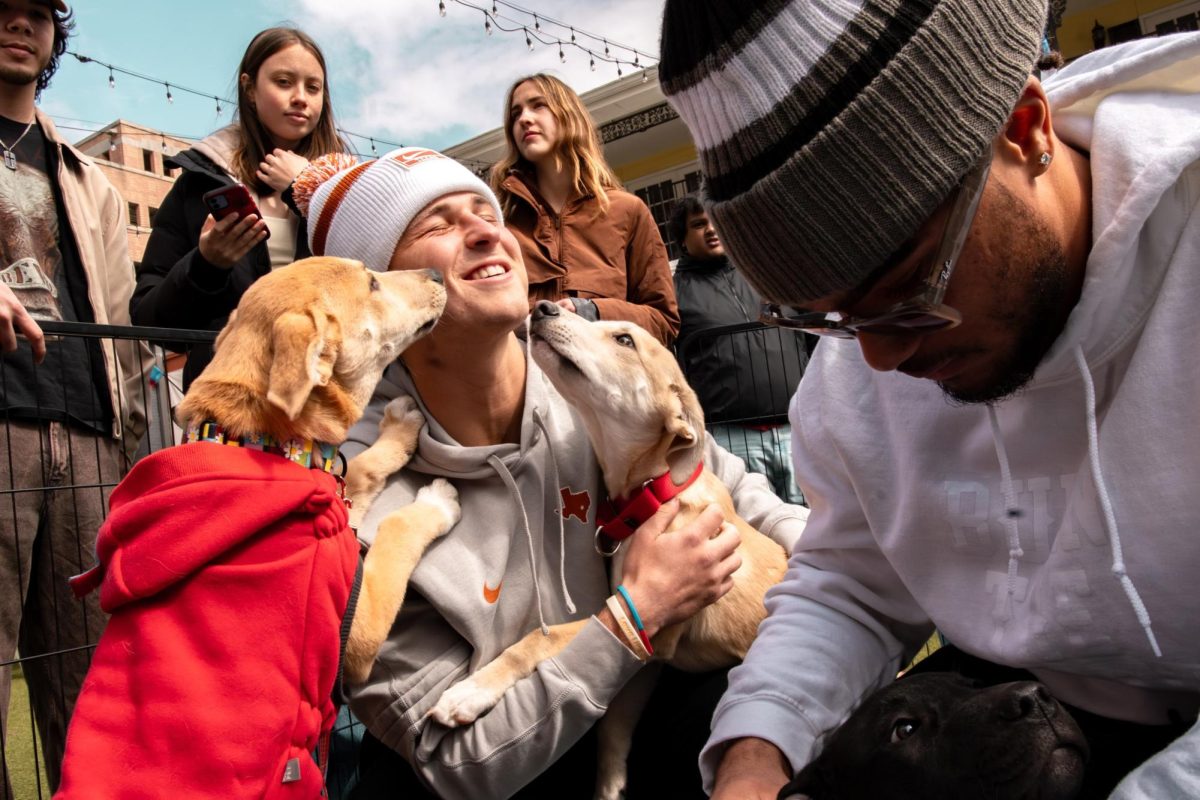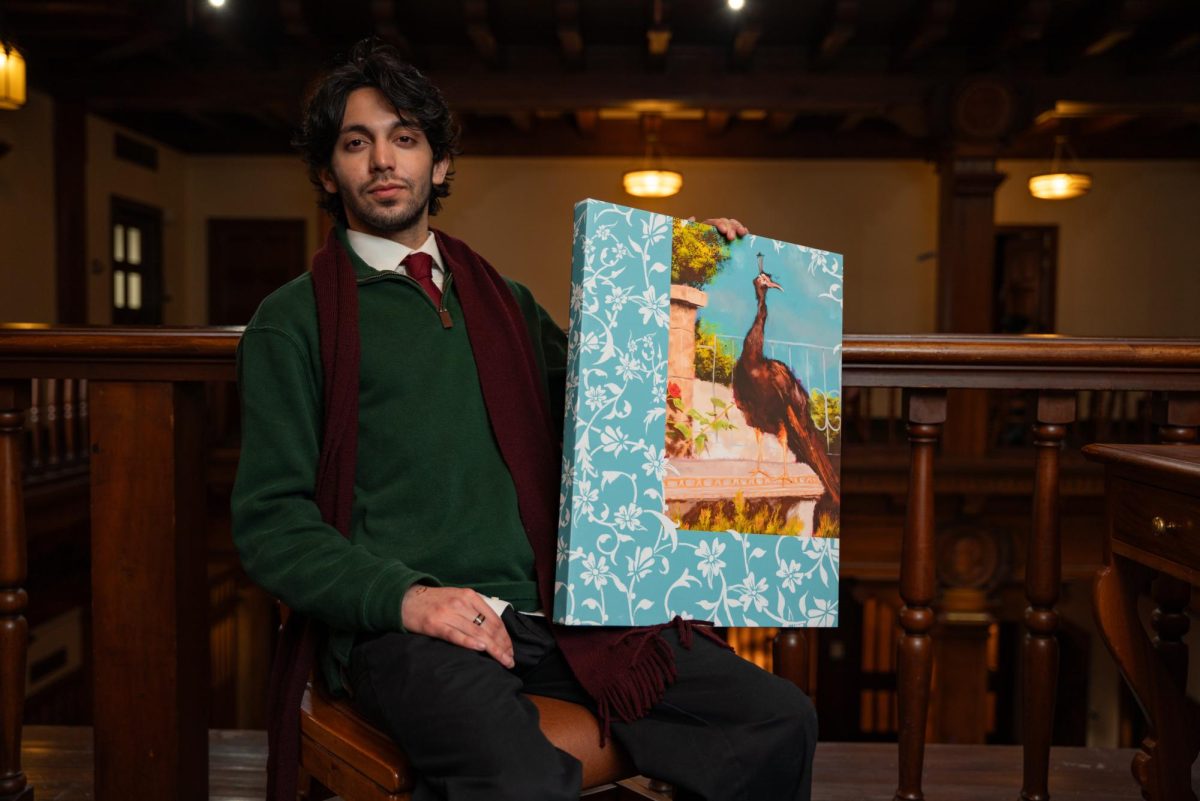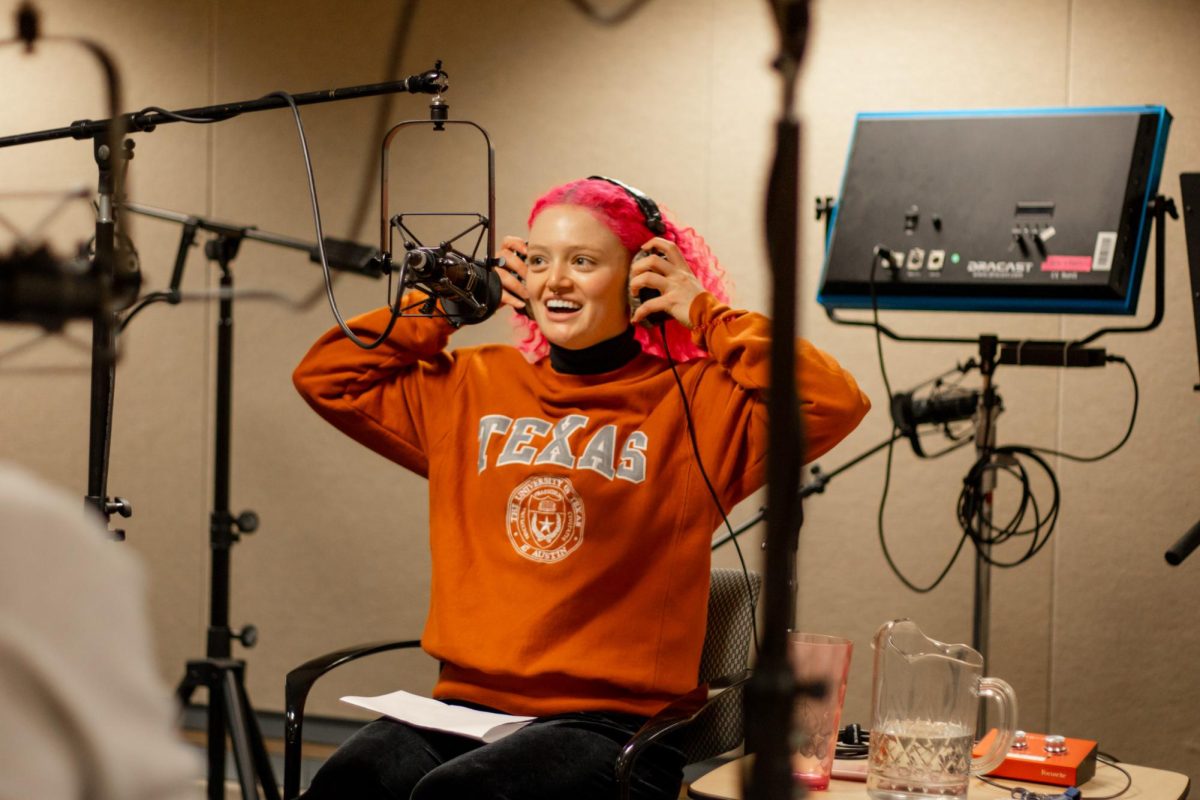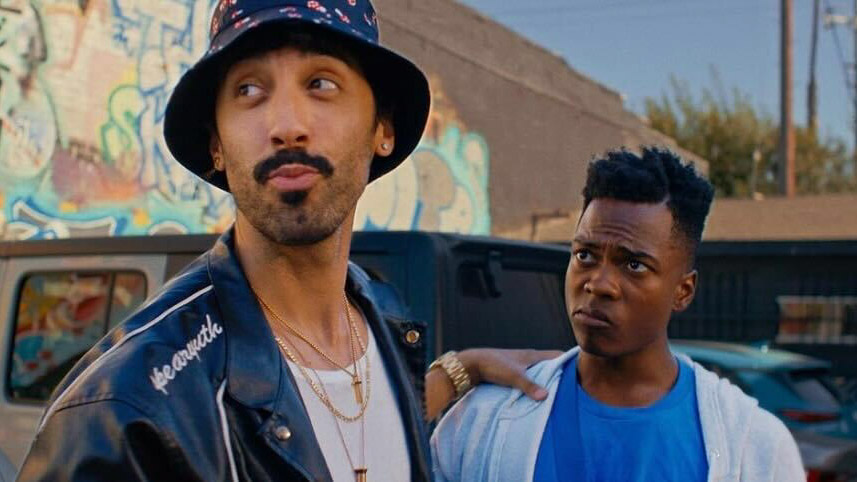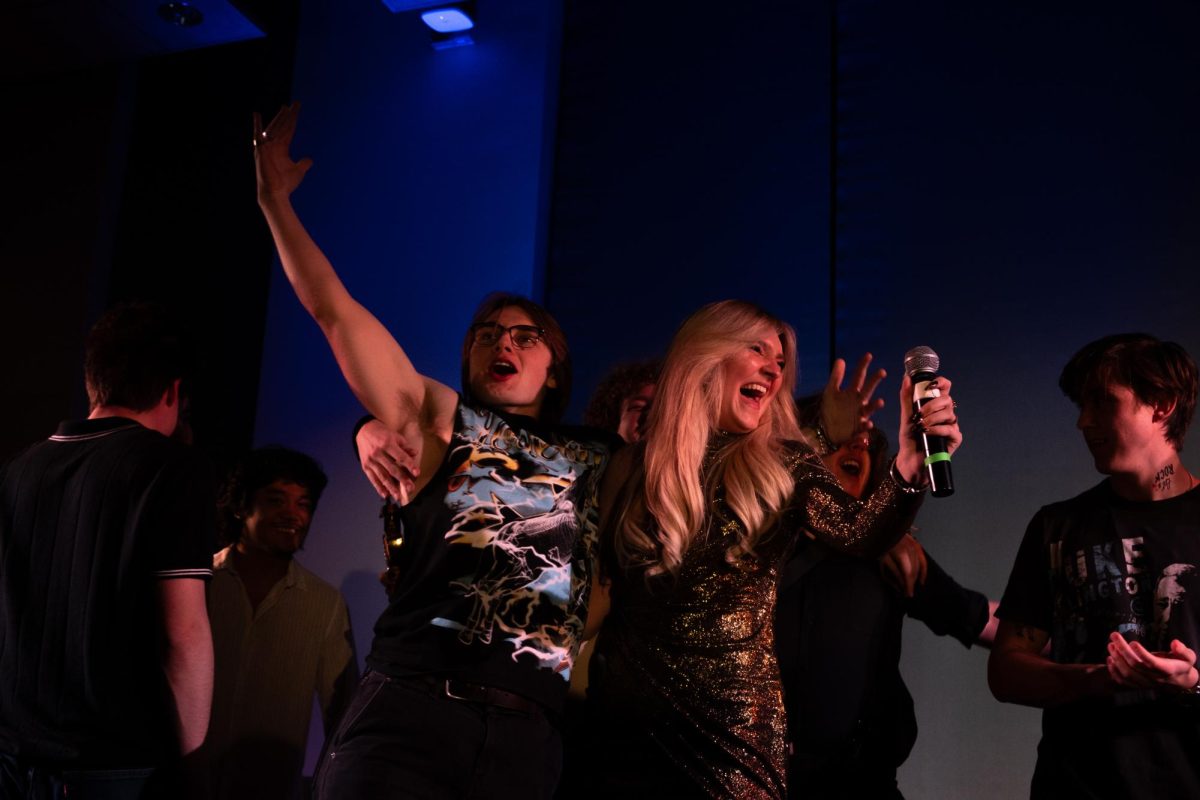Some might consider Lance Armstrong to be Austin’s claim to fame as far as cycling is concerned, but when it comes to extreme bike racing, let’s just say that Armstrong hasn’t ever wolfed down a boiled octopus in 21st Street Co-op’s infamously brutal MF 100.
“I think Lance Armstrong would tank in this race,” said Will Wolfe, a geology senior and an organizer of the MF 100 bike race. “He probably doesn’t have the stomach for it, honestly. Or the technical abilities. This course is basically just a perilous urban single-track hell. There are so many dangerous little turns and there’s so many bad little obstacles that I think he would just shit his pants.”
The MF 100 — short for an expletive and how many times each team has to bike around the 21st Street Co-op — is billed as “the most extreme bike race in Travis County,” according to race organizers. The sixth annual race, which took place on Sunday and was attended by about 100 people, pushed that reputation to the edge of sanity.
“This year’s race is going to blow last year’s race out of the water,” Wolfe said before Sunday’s event. “We have taken every precaution and pulled out all of the stops and there is nothing that we’ve held back. I’m talking about major investments in both time and money. Sweat, blood, tears and all the bodily fluids have been incorporated in this race. I think a lot of people are going to be very, very surprised with what they’re going to find.”
One-hundred bruising laps around the Co-op was only the beginning. In the midst of that treachery there were several obstacles which riders had to deal with along the way. Also, don’t forget about the 600 water balloons being hurled at random, the ravenous beer-slurping team members hungry for victory, a vicious gang of costumed police women with a license to brutalize and a mischievous wizard named Murflin who had the power to curse riders’ bikes, leaving them to scoot helplessly for one lap around the track on a brakeless, gearless shell of a bicycle.
“Really this race is all about ‘you will do what we ask you to do,’” said Ryan Hailey, a 2010 RTF graduate and former 21st Street member who flew in from Los Angeles to reprise his role as “the Mayor,” who facilitates the race. “And you being able to do that is what will win the race. So whatever it takes. Whatever it takes.”
“Whatever it takes” might have made a Tour de France competitor pedal back home.
The race started around 3 p.m. after a morning’s worth of setting up obstacles and challenges, explaining the rules and gathering supplies — everything from candy canes to cow stomachs. The six teams, each one represented on the course by two riders who were responsible for completing 50 laps apiece, took their places at the starting line in the front of 21st Street Co-op.
No amount of training could prepare them for what would come next, said Ben Baron, an economics senior who rode in two previous MF 100 races and also biked to Alaska with Texas 4000 in 2010.
“There’s really no way to train for this ride because it changes every year,” he said. “I walked the track last night in the middle of the night under the cover of darkness — every rider should have some mental stretches that they do in order to compete properly. Mine are just being alone with my thoughts and the course.”
The riders, mentally stretched or not, fidgeted in their positions. Then one of the woman police officers dropped a pink handkerchief and everyone charged forward, but only after chugging their first beer.
As the racers barreled recklessly around the course, which featured sharp-cornered geographic monstrosities like “The Devil’s Crooked Sphincter,” their respective team members busied themselves by downing beer-bongs — a homemade device constructed from a funnel, a tube and beer.
Every time a beer-bong was finished the team responsible earned a shortcut, kept track of by the Mayor himself. A shortcut gave riders access to the “Highway to Hell,” which effectively reduced the length of the course by about one-third. ACDC’s “Highway to Hell,” played on full blast over and over again, providing some ambiance to that area of the track.
“The whole point of there drinking in the race is that everybody has a part in it,” said Gregg Wehmeier, a 2010 RTF graduate who founded the MF 100 for a documentary class project in 2007. “Everybody here helps determine the race.”
And then there were the challenges — more this year than ever before — which riders had to confront after they met certain checkpoints in the race, like completing 25, 33 and 50 laps, for example.
“This is going to be the messiest, most disgusting, hardest race yet,” Wehmeier said. “If each rider doesn’t puke at least three times I’m going to be absolutely shocked.”
The “North Pole” was the first obstruction, and it gave competitors the chance to cool down in a trash can filled with ice-water while they sucked furiously on candy canes. Once all the red was sucked off the tip of the candy cane, a scantily clad Santa Claus, who was overseeing the challenge, gave them the go ahead to move on to the next obstacle.
That would be the “gastric challenge,” which Wehmeier called “unbelievably disgusting,” and Hailey said “gave ‘Fear Factor’ a run for their money” — both claims that the racers who ended up vomiting could probably agree with. The challenge consisted of several “mystery boxes,” each one hiding a different food item (vegetarian options available) underneath. There was the cow stomach (“it’s too chewy,” reported an unfortunate biker), the octopus, a bar of fruity paste, a spam sandwich, pickled herring, beef jerky and more.
Once riders chose and ate their fate — Hailey said it was their own fault if they picked something horrible — they got to continue racing, dodging wizards, water balloons and vicious lady police officers until lap number 33.
That’s when Alex Trebek’s Spanish-television counterpart “Alejandro Trebek,” coached competitors through the “cognitive challenge” — “built off of last year’s wildly popular maple syrup-covered jigsaw puzzle,” according to Hailey. This year’s challenge put players head to head as they constructed various LEGO structures covered with pure silicone lubricant.
“I feel like this is a great experience for us, especially as an internal marketing event,” Joshua Sabik, who lives at 21st and is the advertising and marketing coordinator for College Houses, said. “It really highlights the positive aspects of the community environment at 21st Street. We come together, we get on our bikes, we race, a few people have drinks. It’s a lot of fun.”
That fun got a healthy dose of artistry at lap 50 when each team’s first rider traded places with the second. The switch couldn’t happen, however, until both entered “Vincent van Gogh’s Still-life Conservatory,” a kitchen-turned-art studio. Inside the Conservatory, a maniac 19th century Dutch Impressionist painter with a bloody nub for an ear, played by co-op member Aaron Goldman, a studio art senior, gave competitors a lesson in “expressing themselves,” as Goldman put it before the race started.
This involved one rider painting the other’s nude portrait, a task made more complicated by van Gogh’s passionate, hard-to-meet demands. If a portrait didn’t pass van Gogh’s discerning eye, he would rip it up, sometimes using his teeth and scream at the artists-in-training to start over.
“You call this art?” he screeched at his racer-pupils as he ripped their work up and commanded them to begin again.
Then each team’s second rider manned his bike and the whole race essentially started over again. When they finished their 50 laps, the race was declared over. “Team Jerk” ended up finishing in first place.
“This is the stupidest race I’ve ever done in my life,” said Fry, who rode for Team Jerk and doesn’t have a last name. “So much fun.”




